COSC 829: Avdvanced Virtual Reality Systems
Final Projects, Semester: Fall 2013 |
Multi-User Virtual Reality Environments |
Project 1: I-MAGS (Interactive Multi-user Aerial Gaming Simulation)
Student: Kevin Gross |

Top view of the city |
This project is based on a previous project called Interactive Flight Simulator (IFS). The goal of this project is to build upon the previous IFS project creating a multi-user component that allows for Commander – Pilot communication. The user will be capable of flying the aircraft, navigating through the city, locating targets, destroying targets, and communicating with Commander/Pilot. It is the responsibility of the pilot to complete his/her mission before the timer reaches zero.
After the clients connect to the server, they are immersed into the mission. The client view is equipped with a score tally, countdown mission timer, missile ready power, and a top-down view of the battlefield without target locations. The user is able to navigate by using the following: Up Arrow Key (move forward), Down Arrow Key (move backward), Left Arrow Key (move left), Right Arrow Key (move right), Page Up (ascend aircraft), Page Down (descend aircraft), Left Mouse Button (shoot projectile), also the user’s view is linked to the mouse. In doing so, the user is able to look around at their surroundings while in the cockpit.
|
 |
 |
| Client view |
Server view |
 |
 |
 |
 |
| |
|
Project 2: SWAT: Tactical Training in a multi-user VR environment
Student: Rasheed Duvall |
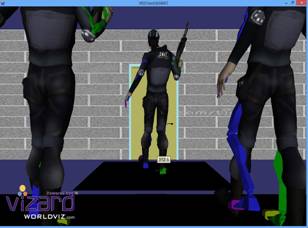
At start, all clients positioned outside |
A SWAT team is a special group of police trained to deal with unusually dangerous or violent situations. They are employed, for example, in situations when hostages are being held, or heavily armed persons need to be captured. If a single member of this team deviates from their assigned responsibilities, deadly consequences can follow. For this reason, it is highly important that they operate as a single, cohesive unit to accomplish their goal of safely securing a site.
The goal of this project is to create a training environment for a SWAT team to practice their collaborative techniques. Specifically, the scenario of breaching a single floor home and safely securing all of the rooms of the home will be tested. Each member of the team will have to perform their own duties correctly for the breach to be a success. If any member errs in their responsibility, the scenario will fail. The SWAT team will consist of four team members. Each member will have their own set of responsibilities for breaching and securing the house. The team members will be labeled 1 through 4 for the purpose of assigning responsibilities. Watch video for better understanding of SWAT duties:
http://www.youtube.com/watch?v=hfBffSr1udk |
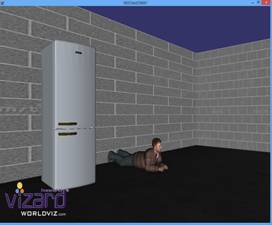
|
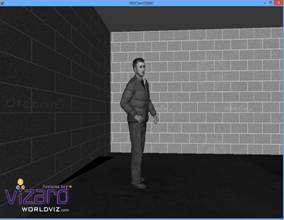 |
Suspect lying prone, symbolizing that he is contained. |
Screen faded to gray symbolizing that the client has failed the simulation by making an incorrect move |
| |
|
Project 3: BSU Campus Library Emergency Evacuation in a Multi-user Environment
Student: Wenhao Chen |
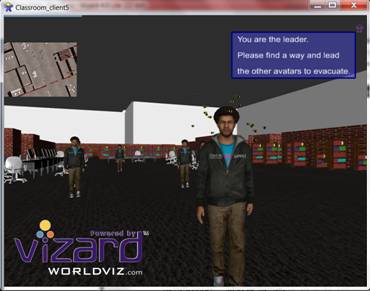
|
The goal of this project is to offer a simulation environment which can help the students and the teachers to know how to evacuate from the school library to a safe place under the emergency condition such as hazard material, fire and terrorist attack. This kind of training will help the students and the teacher to know how to deal with the emergent conditions.
The server is constructed by first importing Vizard library files viz and viznet. These two files include functionality that enables the virtual world to be created in the project. The virtual world contains a list of objects that can be selected by each individual client that tries to connect to the server. |
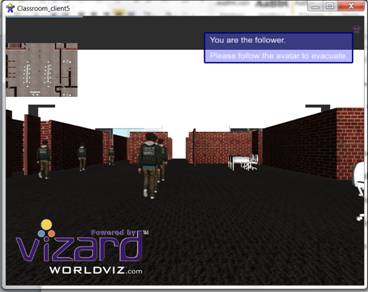 |
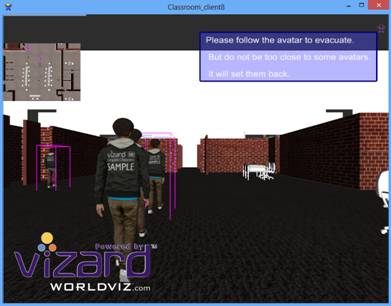 |
| Path Following Behavior |
Host Avoid Behavior |
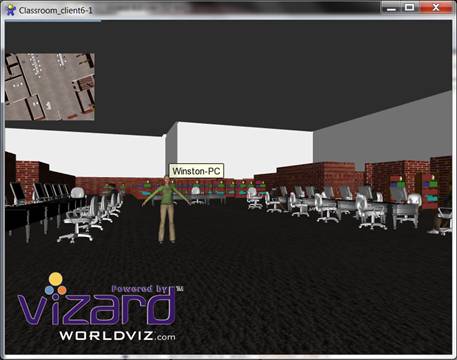 |
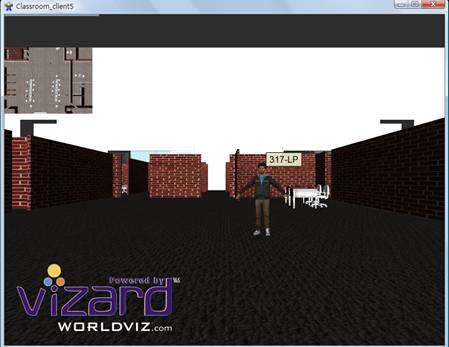 |
| Second user view in multi-user environment |
First user view in multi-user environment |
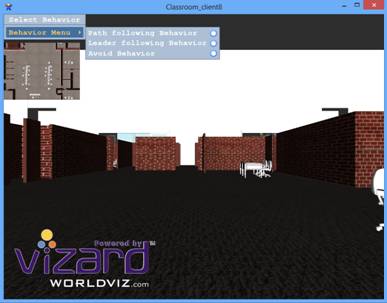 |
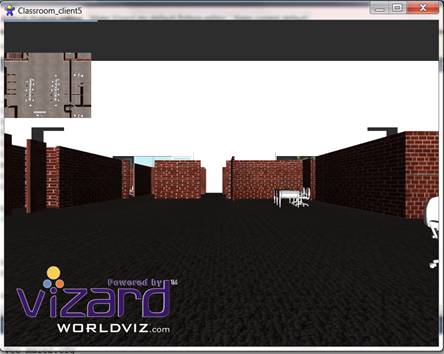 |
| User Menu |
Inner view of school library |
| |
|
Project 4: Mult-user Urban Emergency Response Environment
Student: Roy Brown |

Client (left-side) and Server (right-side) |
Over the past decade wildfires have been making headlines. As a result, wildland firefighting has grown to a high level of importance. The US is in dire need of an effective strategy to address this issue. However, according to the Federal Aerial Fire Fighting agency the Unites States doesn’t have an effective aviation plan that addresses this concern.
The goal of this project was to create a helicopter training simulation that will aid in the efforts of treating wildfires. The simulation includes various scenarios immolating real-world instances. Real-world instances are in place to develop alternative techniques that may be applied to real life situations. It is anticipated that the user will gain skills and knowledge in the virtual environment that they will then be able to apply to the real world due to the sense of presence and realism a virtual environment can provide. This application has a dual purpose. The simulation may be used for both training and educational purposes. The application is to track user efficiency and decision making strategies. Multiple agents are necessary for this environment because it will promote communication, collaboration, and will enhance the decision making process.
|
 |
 |
Smoke and fire created in Vizard. |
Civilian Mode. |
|
|
Project 5: Multi-user Evacuation of a Burning Building
Student: Michelle Snowden |
 |
This project is a virtual reality system to simulate emergency evacuation during fires in a building. The user can navigate freely in the virtual environment as if he/she was in a real building. Occupants need to exit the building in the event of a fire. Some casualties can be greatly reduced if emergency evacuation planning methods and drills are introduced. Some building structures are many of the causes of the casualties. Every building does not have the same structure, therefore, exiting the building in the same fashion could cause someone to lose their life or get burned. Thereby, creating a virtual environment where occupants can navigate through the building freely give a sense of real-world environment.
This project can be used as an educational tool to teach people about emergency procedures. People inside of the burning building will safely exit the building by running or walking when a certain key is pressed or on timer. This application presents a library building environment with several classrooms and offices with students, teachers, chairs, televisions, walls, doors and tables.
|
| Server view of the building |
|
 |
 |
| Views from Client Side |
View of the custom built avatar (Firefighter) |
|
|
|
|
